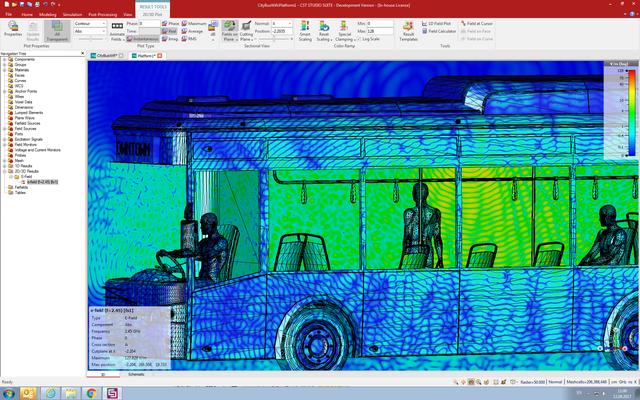Definitionofsimulation
Simulationistheimitationofacertainlevelofabstractattributesofarealsystem.Peopleusesuchmodelstoexperiment,gettheinformationtheyneed,andthenhelppeoplemakedecisionsaboutacertainlevelofproblemsintherealworld.Simulationisarelativeconcept.Anyrealisticsimulationcanonlybeanapproximationofcertainpropertiesoftherealsystem.Simulationishierarchical.Itisnotonlyaimedattheobjectivesystemproblemstobedealtwith,butalsoatthelevelofneedsoftheproposedprocessor,otherwiseitisdifficulttoevaluatetheprosandconsofasimulationsystem.
Traditionalmethod
Traditionalsimulationmethodisaniterativeprocess,thatis,accordingtothecharacteristics(process)ofacertainleveloftheactualsystem,amodelisabstracted,andthenthesituation(input)isassumed,Thetestiscarriedout,andthetesterinterpretstheoutputresultsandverifiesthemodel,andmodifiesthemodelandrelatedparametersaccordingtothejudgment.Thisisdoneiterativelyuntilitisconsideredthatthismodelhasmetthetester'sgoalofacertainlevelofsimulationoftheobjectivesystem.
Themodel'sabstractdescriptionofacertainlevelofcharacteristicsofthesystemincludes:thecompositionofthesystem;thestatic,dynamic,andlogicalrelationshipbetweenthecomponents;theoutputresponseofthesystemundercertaininputconditions,etc.Accordingtothecharacteristicsofthestatevariablechangeofthesystemmodel,thesystemmodelcanbedividedinto:continuoussystemmodel-statevariablesarecontinuouslychanging;discrete(event)systemmodel-statechangesatdiscretepointsintime(generallyuncertain)Changesintheabove;hybrid-amixtureoftheabovetwo.
Computersimulationtechnologyandthecomputerusedforsimulation(simulatorforshort)shouldfullyreflectthecharacteristicsoftheabovesimulationandmeettheneedsofsimulationworkers.
Emulator
Thecomputerusedforemulation.Mostofthesimulatorsinthe1950swererealizedbyelectronicanalogcomputers.Insomespecialapplicationfields,hydraulicpresses,pneumaticpressesorimpedancenetworkswerealsousedasthemainsimulationequipment.Duetoshortcomingssuchaspooraccuracyofelectronicanalogcomputers,digital-analoghybridsimulatorshavebeendevelopedsincetheearly1970s.
Sincethelate1970s,variousspecialandgeneral-purposeemulatorsbasedondigitalmachineshavebeenpopularizedandpromoted.Duetotheremarkableprogressofhigh-performanceworkstations,supercomputers,smallgiants,softwaretechnologyandartificialintelligencetechnology,inthe1980s,peopleplacedhopesonintelligentsimulatorsandintegratedtheadvantagesofdigitalsimulationandanalogsimulation.Basedonthis,ahigher-leveldigital-analoghybridsimulatorwasdesigned.Insomespecificsimulationfields,thisintelligentsimulatorandhigh-leveldigital-analogsimulatorhaveachievedencouragingresults.
Withtherapiddevelopmentofcomputertechnology,anumberofuniquesimulationworkstations,smallgiant-typesimulators,andsupercomputer-typesimulatorshavealsoappearedinthesimulator.Somesimulatorsintroducedintheearly1980s,SYSTEM10andSYSTEM100arerepresentativeofthistypeofsimulator.SimulationsystemInordertoestablishaneffectivesimulationsystem,itgenerallyhastogothroughthestepsofmodelbuilding,simulationexperiment,dataprocessing,analysisandverification.Inordertoformapracticallarge-scalesimulationsystem,inadditiontothesimulator,itisalsonecessarytobeequippedwithcontrolanddisplayequipment.
Introduction
Computersimulationtechnologyusestheachievementsofcomputerscienceandtechnologytoestablishamodelofthesimulatedsystem,andconductdynamicexperimentsonthemodelundercertainexperimentalconditionsAcomprehensivetechnology.Ithastheadvantagesofhighefficiency,safety,lessrestrictedbyenvironmentalconditions,andchangeabletimescale.Ithasbecomeanimportanttoolforanalysis,design,operation,evaluation,andtrainingsystems(especiallycomplexsystems).Thisbookintroducesthebasisofcomputersimulationtechnology,themethodologyofsystemmodelestablishment,continuoussystemnumericalintegration,discreteeventsystemsimulation,object-orientedsimulation,high-levelarchitecture,embeddedsimulationsystemandtandemcoldrollingoptimizationsimulation,simulationmodelverification,Verificationandapproval,planningandconstructionofreal-timesimulationsystem,researchonsimulationsystemofliquidtransportation,applicationofreal-timesimulationsystemforservocontrol,modelingandsimulationbasedonMATIAB/Simulink.
Thisbookcanbeusedwithvariousengineeringandtheoreticalresearchtextbooksforlearningandscientificresearch,especiallytheresearchonmodelingprocessingmethodsthataregenerallyconcernedatpresent,andthemethodofsimulationtechnologyisusedtoconnectallkeylinks.,Improvethelevelofproductionandresearch.Throughsomepracticaltopicsintheindustrialprocess,theconnotationandnewresultsofthefieldof"systemsimulation"areintroduced.Thesecontentswillprovideimportanthelpforcollegestudents,postgraduatesandscientificresearchersintheirresearchwork.Thefirstfewchaptersusesomeofthesimplestexamplestointroducebasicconceptsandmethodsrelatedtosimulationandmodeling,whichcanbeusedasatextbookforteachingandgraduationdesignforseniorstudentsincollegesanduniversities;thenextfewchaptersarespecificallyforgraduatestudentsandhigh-levelresearchers.Ithasimportantreferencevalueforresearchingtheoreticalandpracticalproblemsinengineering.
BookCatalog
Foreword
GuidetoReadingtheBook
Chapter1ComputerSimulationTechnologyFoundation
1.1Startingfromrealproblems
1.2Systemandsystemclassification
1.2.1Systemconcept
1.2.2Systemenvironmentconcept
1.2.3Randomconceptsinsystems
1.2.4Continuoussystemsanddiscreteeventsystems
1.3Theconceptandclassificationofsystemmodels
1.3.1Conceptofsystemmodel
1.3.2Classificationofsystemmodel
1.4Systemmodelingincomputersimulation
1.4.1Theideaofbuildingamodule
p>1.4.2Principlesofrelatedinformation
1.4.3Principlesofaccuratedata
1.4.4Principlesofentityaggregation
1.5ComputersimulationDefinitionof
1.5.1Analysisofsimulationmethodsandanalyticalmethodsinproblemsolving
1.5.2Classificationofcomputersimulation
1.5.3ComputersystemsimulationBasicsteps
1.6Outlineofthedevelopmentofcomputersimulationtechnology
1.7Summary
Thinkingquestions
Chapter2MethodologyofSystemModelEstablishment
p>2.1Systemandmodeling
2.1.1Formaldescriptionofsystemmodelingmethod
2.1.2Classificationofsystemmathematicalmodel

2.2Methodologyofsystemmodeling
2.2.1Theroleofthesystemmathematicalmodel
2.2.2Thebasisforestablishingthesystemmodel
2.2.3TheavailabilityofthesystemmodelReliability
2.2.4WaysofSystemModeling
2.3SystemIdentification
2.3.1OverviewofSystemIdentification
2.3.2Dynamicsystemidentification
2.4Systemmodelingpractice
2.4.1Mechanicalsystemmodelingmethod
2.4.2Electricalsystemmodelingmethod
2.4.3Systemmodelingmethodincontinuouscastingprocess
2.4.4Curvefittingandinterpolationprocessingofmechanical-electric-magneticexperimentalsystem
2.4.5Curvefittingandpokevalueprocessingofexperimentaldata
2.4.6Ecosystemmodelingmethod
2.4.7Identificationmethodmodelingexample
2.5Summary
Thinkingquestions
Chapter3NumericalIntegrationofContinuousSystems
3.1BasicPrinciplesofNumericalIntegrationofContinuousSystems
3.1.1EulerMethod
3.1.2ImprovedEulermethod
3.1.3Severalbasicconceptsofnumericalintegrationmethod
3.2Runge-Kuttaintegrationmethod
3.2.1Runge-DerivationofKuttaNumericalIntegrationFormula
3.2.2VectorFormulaofFourth-OrderRunge-KuttaMethod
3.3LinearMulti-stepMethod
3.3.1AdamsExplicitFormula
3.3.2Adamsimplicitformula
3.3.3Adamsestimate-correctionmethod
3.4Stabilityanalysisofnumericalintegrationmethod
3.4.1Themeaningofthestabilityofthenumericalsolution
3.4.2Stabilityanalysis
3.5Thechoiceofthenumericalintegrationmethodandthedeterminationofthecalculationstep
3.5.1Selectionofintegrationmethod
3.5.2Determinationofintegrationstepsize
3.5.3Errorestimationandstepsizecontrol
3.6Summary
Thinkingquestions
Chapter4DiscreteEventSystemSimulation
Chapter5Object-OrientedSimulation
Chapter6High-levelArchitecture
Chapter7EmbeddedSimulationSystemandColdTandemRollingOptimizationSimulationSystemImplementation
Chapter8SimulationModelCheck,VerificationandApproval
Chapter10HotMetalTransportationSimulationsystem
Chapter11ApplicationofServoControlReal-timeSimulationSystem
Chapter12ModelingandSimulationBasedonMATLAB/Simulink
